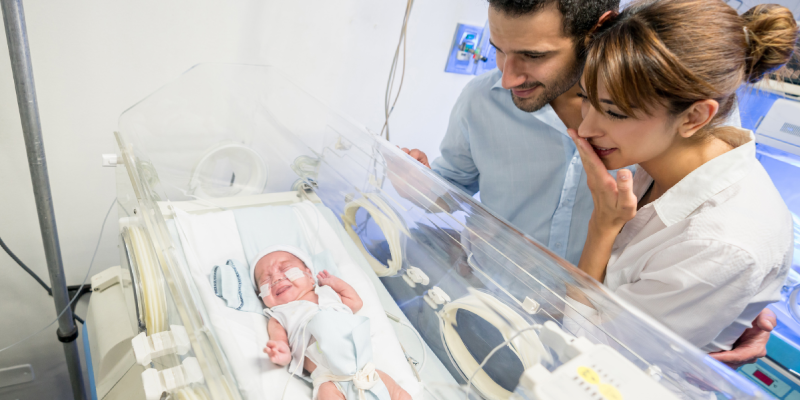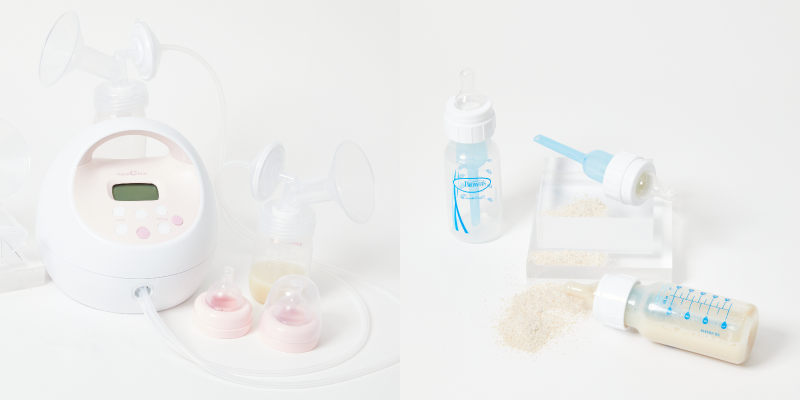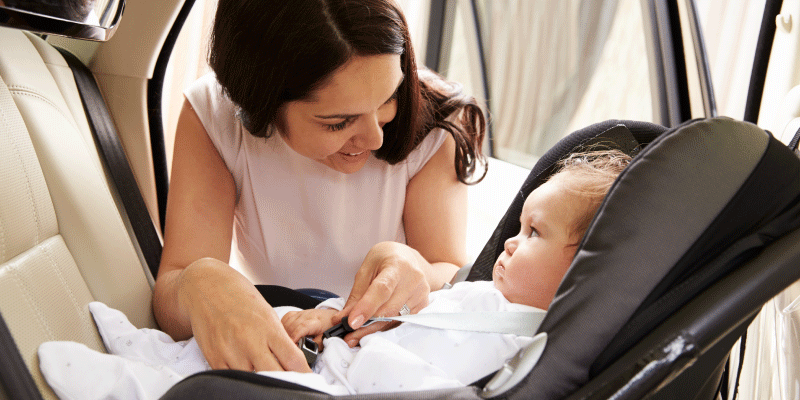Car Seat Safety Check: 7 Mistakes to Avoid
The baby’s car seat is the most crucial piece of equipment to safely transport your little one to and fro. It’s so important that you won’t even be able to leave the hospital with your baby until you have everything correctly secured. While it seems simple enough, most parents are making mistakes, completely unaware of the danger they’re inadvertently exposing their baby to. Once you have everything properly secured, however, the chances of your baby being injured in a crash are slim to none. If you’re not sure whether the car seat is installed properly, do a quick seat safety check. These are the most common mistakes to avoid.
Mistake #1: The car seat is too loose
Before you put the baby in the car, test how secure the actual car seat is at the base. It should not be able to move more than one inch when pulled side-to-side or front-to-back. If you’re able to rock it either of those directions, it’s not tight enough. According to seat belt inspectors, this is the biggest mistake that parents make when initially installing the car seat.
Fix it: Car seats should be installed using either the LATCH system or a locked seat belt to secure it in place. If you’re using a seat belt, grasp the belt and pull it as snugly as you can and then lock it into place. Locking the seat belt is often the step that parents forget.
Mistake #2: The harness isn’t snug enough
Once you have the baby fastened into his seat, test how tight the harness is secured. If you can still pinch the fabric of the harness straps between your fingers, the harness is too loose. A child could easily come out of the seat or be ejected in the event of a crash if the straps are not tight enough.
Fix it: Tighten those straps! They should be snug and have no slack when they are secured properly.
Mistake #3: Your infant is facing forward too soon
The American Academy of Pediatrics (AAP) says children should remain rear-facing until they have reached the appropriate height or weight capacity of the car seat. The estimate used to be age 2, but the age recommendation is now a secondary condition. When a child is rear-facing, the strongest part of his body — his back — can absorb the impact of a potential crash.
Fix it: Follow the guidelines of the AAP and keep your child in a rear-facing seat until he’s reached the maximum height and weight limit of the car seat.
Mistake #4: Your rear-facing seat isn’t positioned at the right angle
If the car seat is not securely positioned at the correct angle, your little one may be in danger of his head flopping forward and causing injury to his neck or pinching off his airway. All car seat instructions should have built-in angle indicators or adjusters so that you know what angle it should be at.
Fix it: Most cars have a natural downward slope in the back seat. Because car seats are designed to be installed on a flat surface, you’ll need to be able to tilt the car seat to the angle it requires. A rolled-up towel or a swimming pool noodle can be placed under the area where the baby’s feet rest, giving your car seat the necessary angle to keep baby safe.
Mistake #5: The harness chest clip is in the wrong spot
Take a look at where the harness chest clip sits on your baby. If the clip is not at the center of his chest and even with his armpits, it’s in the wrong spot. The clip is designed to ensure the harness straps are in the right place and don’t slip down off your baby’s shoulders.
Fix it: Because the clip is something that parents often move to get the baby out of the seat, this is something you’ll need to check every time the baby gets put into the car seat.
Mistake #6: The harness straps are in the wrong slots
Most car seats come with three sets of harness slots with the lower two for rear-facing and the top set for the forward-facing position. Once seats face forward, the upper slots have extra reinforcement to keep the harness secure. But when parents turn the seat around, they forget to adjust the straps.
Fix it: Move the shoulder straps to the slots that are at or above your baby’s shoulders, or closest to his shoulders. Check with the instructions if you need to be sure you’re positioning the straps properly.
Mistake #7: Your car seat has been recalled
The National Highway Traffic Safety Administration (NHTSA) keeps a list of recalled car seats because while millions have been recalled, they’re rarely repaired or replaced. Before you check out the list you’ll need to have your car seat’s model name, model number and manufacture date handy (all listed on the seat itself).
Fix it: If you find that your car seat is listed for a recall, you’ll need to contact the manufacturer for further instructions.
June 3, 2019 By Shawnna Stiver MOTHERHOOD PREGNANCY

















